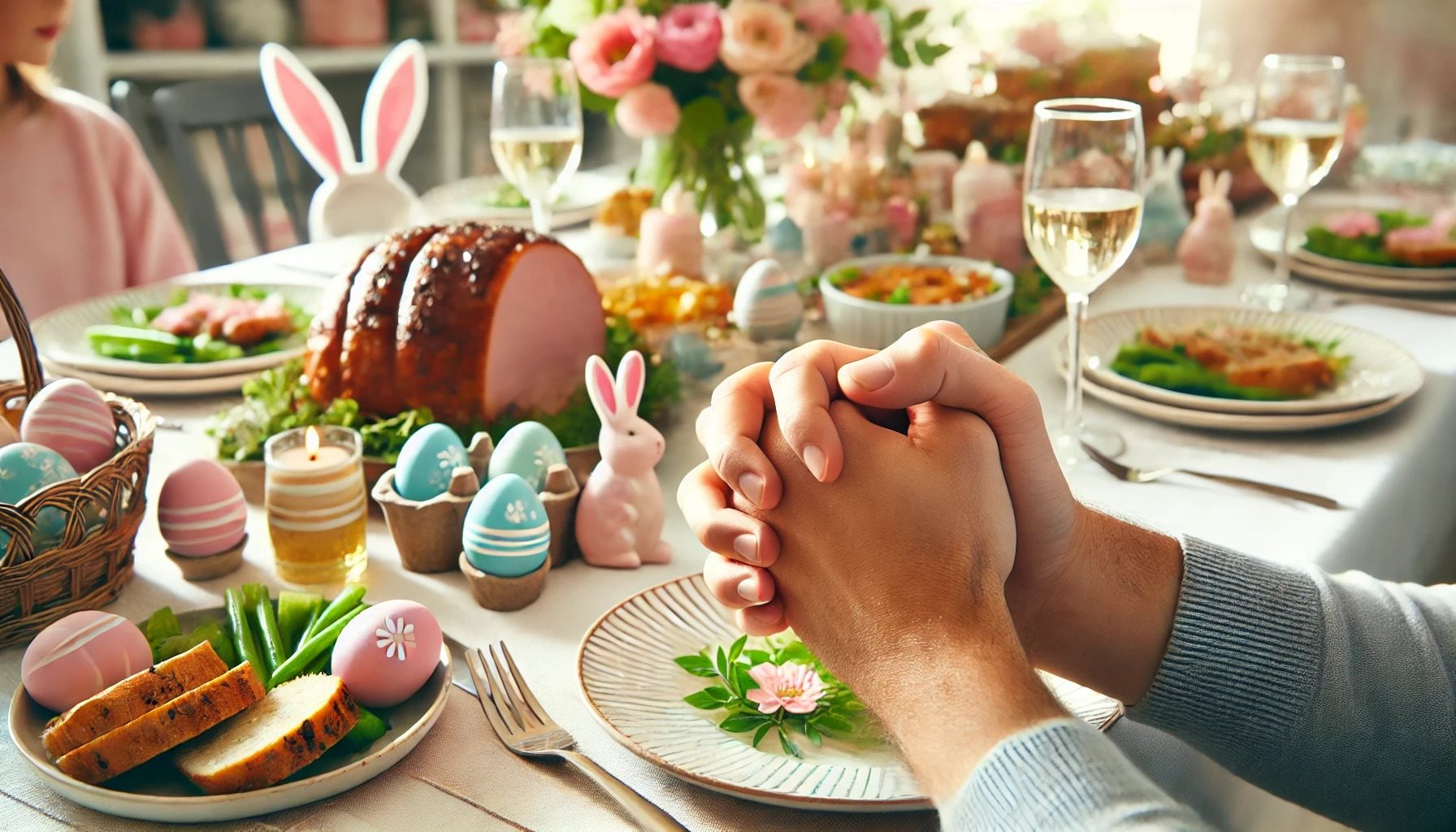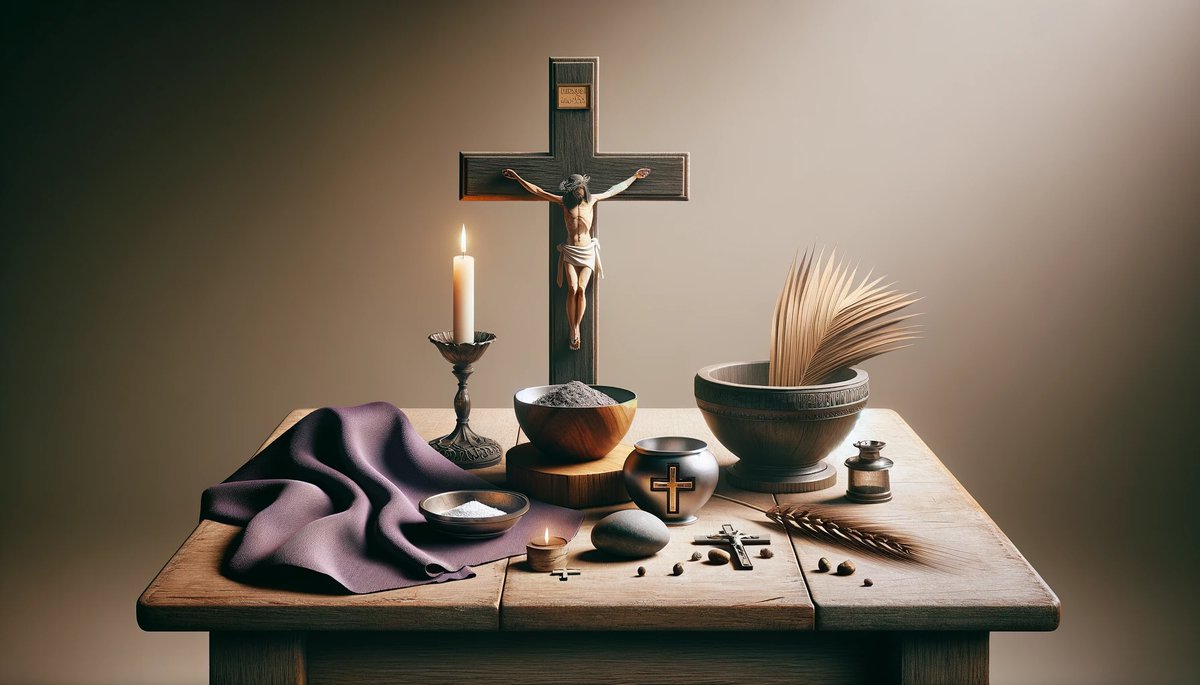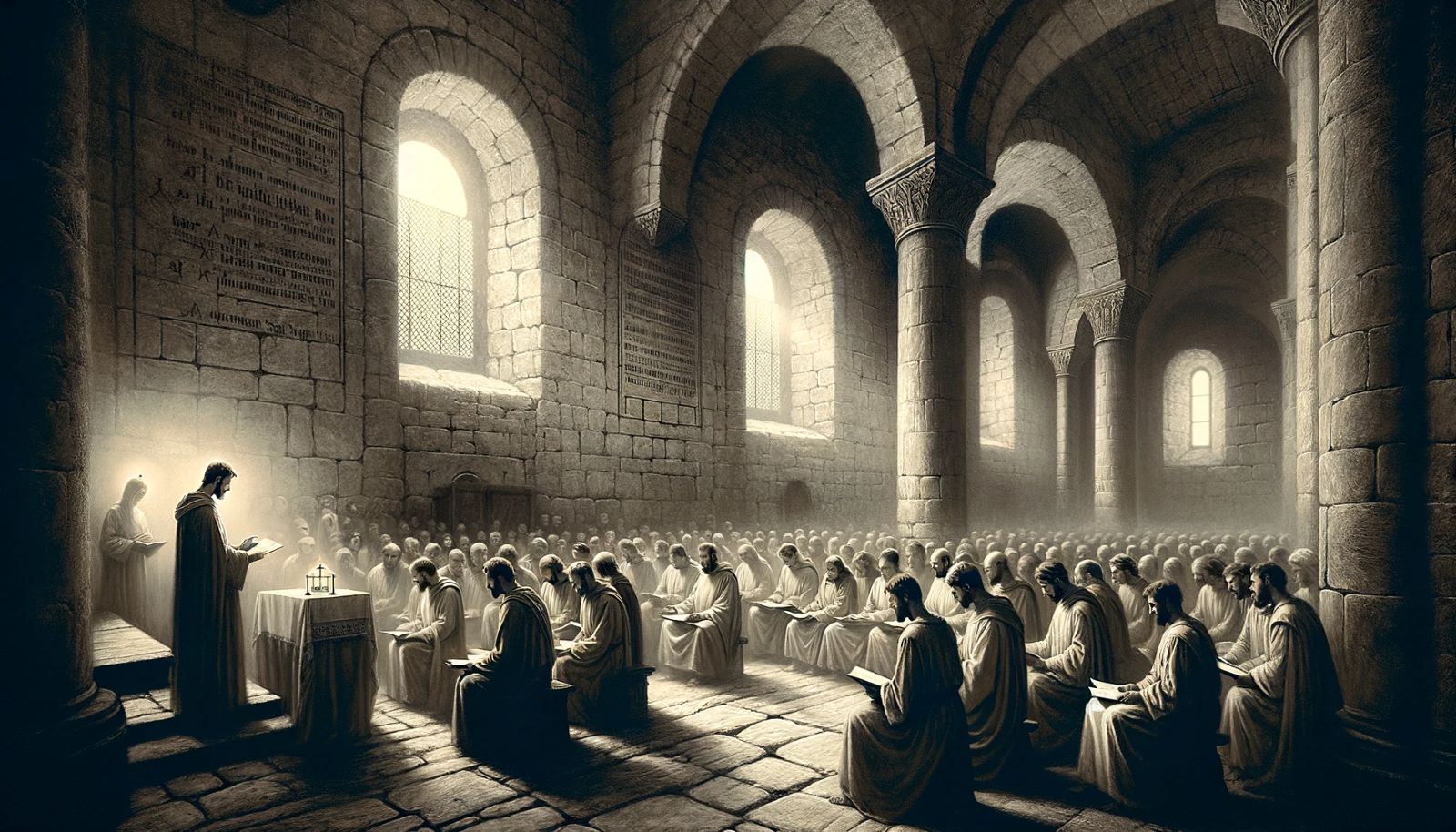Home>Christian Resources>Easter Colors: Significance and Symbolism


Christian Resources
Easter Colors: Significance and Symbolism
Modified: January 9, 2024
Ericka Andersen, an editor at Christian.net, expertly merges digital strategy with content creation, focusing on faith and societal issues. Her communication skills enhance the platform's engaging narratives, fostering meaningful dialogue on belief's impact on society.
Easter colors have significant meaning and symbolism behind them. Here’s what you need to know about these colors of the Easter season.
(Many of the links in this article redirect to a specific reviewed product. Your purchase of these products through affiliate links helps to generate commission for Christian.net, at no extra cost. Learn more)
Easter is one of the most appealing seasons for Christians. The pastel Easter colors complement the charm of this period. There’s no doubt that these hues of Easter are captivating, and they supplement the season. You might be familiar with the hand-dyed or pastel-painted eggs, the intricately decorated baskets, chocolate bunnies, vibrant hats, and new Easter outfits to look your best for this special occasion. However, you can celebrate Easter in a more fascinating way by using floral decorations and springtide Easter decorations to brighten your house and church. Easter ornaments with their shapes, colors, and significances are all simply irresistible.
Yet, there is a further manner to love and admire these Easter colors. The beauty of Easter colors not only attracts the eye of the beholder, but it will also touch your heart with its significance and symbolism. Easter colors are graphic visual symbols. Each color has an important significance in relation to the Easter and Lenten season. Different hues tinge a meaningful representation that reminds us of the essence of the season. These Easter colors are part of the season for special reasons. Each color indicates a meaning which the human eye may remember when our minds need a reminder of why Easter is significant in Christianity.
The color sequences for the season of Easter started in 1198 by Pope Innocent III. He wrote the treatise, “The Mystery of the Sacred Altar” based on the Book of Song of Solomon. This writing provides descriptions of fitting colors for liturgical observances. Currently, these colors are still used in the celebration of the Easter season. Here are some of these important Easter colors:
PURPLE

Photo by Pixabay
During the season of Lent, purple is the most prominent color of all Easter colors. Interestingly, this color is actually considered as the color for the Lenten Season. Throughout the world, the color purple or violet is associated with royalty. Hence churches associate this wonderful color and its meaning with Jesus, the king of all kings and Son of God (Revelations 17:14). For the seasonal celebration of Good Friday and Easter, many churches use the color purple in their decorations. Also, some pastors and priests wear a violet-colored robe or clothing for the whole Lenten season. This is to signify penance, humility, suffering, and melancholy. The Lenten season covers 40 sacrificial days in remembrance of the fasting and sacrifices of Jesus. So, the color purple reminds Christians of Christ’s sacrifices and suffering. In addition, prayer and solemn living in preparation for Easter accompany the remembrance of these sacrifices.
Purple is also predominant on Good Friday aside from the color black. Good Friday remembers the day when Jesus was crucified on the cross. However, the color purple on this day is interesting because, on the day Jesus was crucified, the Roman Soldiers placed a purple robe and a crown of thorns on him to mock him (Mark 15:16-17). They yelled, “Hail, King of the Jews”, and pretended to worship Him as they spit on Him and struck Him on the head (Mark 15:20).
Yet, aside from sorrow and suffering the color purple also symbolizes wealth, royalty, and power. Elaborate, excessive, and ornate commonly associate the descriptions for this Easter color. In ancient times, it is a luxury dye. The Bible also speaks of this color as a color for wealth.
Read more: What Is The Significance Of Lent?
The Color Purple in the Old Testament
The incident of soldiers mocking Jesus is not the first time the Bible mentions the color purple. As a matter of fact, the color purple alongside the colors blue and scarlet is a very significant thread in Jewish tradition. God instructed to use almost the same colors in the creation of the temple, the tabernacle and the colors of garment He chose for priestly labor. It is interesting to note that the color purple is a constant color for God’s demand on the sanctuary and tabernacle. Thus, giving us an evident confirmation that purple is a pleasing color to God. There were four times where the color purple is associated with God.
First, purple was mentioned in the Bible was after Moses led the Israelites out of Egypt and into the wilderness. God commanded them to build a sanctuary for Him with specific materials and colors which includes threads of purple (Exodus 25:3-7). Second, the Lord instructed the construction of a tabernacle with curtains of fine woven linen, blue, scarlet, and purple thread (Exodus 26:1). The third time in which purple was mentioned in the Old Testament was when the Israelites were to create the veil for the Altar of Burnt offering (Exodus 26:31). Lastly, gifted artisans in the Old Testament made the garments for the priesthood with purple thread and fine woven linen as the Lord has instructed. Other threads for the garments include gold, blue, and scarlet. These holy garments present glory and beauty. Additionally, the same threads of color make the breastplate of Judgement which is also a portion of the priestly garment (Exodus 28:2).
WHITE

Photo by Alena Koval from Pexels
White is a symbol of innocence and purity. Various scholars also incorporate white to God’s grace and God’s glory. Aside from these, the color white signifies the resurrection of Jesus Christ which Easter Sunday celebrates. This Easter color is also prominent in other feasts of the Lord in the Christian calendar. White together with gold is the sanctuary color in most churches around the world during the Easter season.
Throughout the Bible, it is apparent that white symbolizes purity. This purity in the Bible is freedom from sin and iniquity. Isaiah records that if a man’s sin is like a scarlet, it will be white as snow (Isaiah 1:18). In a prayer of repentance of David, in the Book of Psalms, he uttered these lines: “Purge me with hyssop, and I shall be clean; Wash me, and I shall be whiter than snow.” Just like any other man, but a king, David falls into a temptation which made him commit the biggest mistake of his life. He killed his official after sleeping with this official’s wife to conceal his depravity. He sinned to cover up his initial sin.
This iniquity made David fall on his knees uttering this prayer of repentance. After his confession and godly grief, he acknowledged that God can wash away his sins (2 Samuel 12:13). This is not just a simple removal of dirt, but freedom from sin, shame, and guilt. It is purity which the Easter color white signifies. This is what every believer of Christ receives after the Resurrection. A life released from the bondage of sin. Indeed, Easter Sunday is a celebration for God’s triumph over the powers of sin and death. The color white embellishing the Easter season reminds every Christian with these imperative truths.
GOLD
Aside from white, Gold is one of the amazing colors of Easter Day. It is a symbol of victory, wealth, and treasure. Traditionally, the color of sanctuary for Ascension Day and Easter Sunday is white and gold. Gold is a representation of something precious and valued. Moreover, this Easter color denotes the glory of God and His triumph on the Day of resurrection. The glistening gold represents the victory of Jesus over the enemy, death, and sin (1 Corinthians 15:54). He who won the battle on the cross is wearing the golden crown revealing His glory (Revelations 14:14). And through Him, we share the same victory (1 Corinthians 15:57).
We honor this victory we have in Jesus through faith that overcomes the world every Easter (1 John 5:4). In the same way, we remember the inheritance we have found in Christ when we become children of God. We are being tested like gold until we receive the completion of our faith that brings glory to God (1 Peter 1:7). The inheritance of God’s children is far more precious than gold and even any wealth in the world. Revelation 21 records that the street of the city awaiting God’s children is pure gold, like transparent glass. The color of gold shall spark these thoughts as we ornate our homes during the Easter season. We should also keep in mind that we have an imperishable inheritance worth more than gold reserved in heaven for us.
RED

Photo by Pxhere
Red is a very symbolic color in the Bible. This Easter color signifies the passion of Christ, His suffering, blood, and sacrifices. It also represents martyrdom and fire. Isaiah 1:18 says “though they are red as crimson, they shall be like wool”. Red represents the sin of man which leads to eternal destruction by fire. However, though this is the sad truth, the good news is that Jesus’ blood on the cross took away the sins of the world (John 1:29). The Easter color red represents the blood of Jesus which cleanses man from all sin. It also suggests the love of God poured out on the cross for the world.
Although red is not a pastel color but rather that of a vivid Easter color, the celebration is not complete without this hue. It gives balance to the other Easter colors with its vibrant tone. Red is also a prevalent color during Pentecost, the 50th day of Easter. The Day of Pentecost remembers the descent of the Holy Spirit (Matthew 3:11). The color red’s irony is its equal resemblance to the fire of destruction and the fire that saturate one’s soul for a renewed life. Easter colors, beyond a shadow of a doubt, are dazing like red.
GREEN
![]()
The Easter color green is a symbol of new beginnings, renewed and eternal life. Together with other pastel Easter colors, green implies the color of spring. With green being the color of grass, plants, and leaves, it shapes the tone for the spring tide when the Easter typically ensues. Thus, it is just the perfect hue for the Easter season. The same color brings a ray of optimism to a new phase. It sets a mood of elevated anticipation for a new beginning. Green infers a fresh start; this is what makes it full of excitement. Everybody desires for refreshment and renewal. The color green during Easter conveys that kind of rekindling ambiance which most people want.
Easter colors affect the mood of the celebration. Green influences the atmosphere with a refreshing hue effect. It lightens the day after the solemn forty days of Lent. Thus, making everything less heavy after all the commemoration of God’s sacrifices. The Book of the Songs has something to say about this kind of tone.
Song of Songs 2:12
“Flowers appear on the earth; the season of singing has come, the cooing of doves is heard in our land.”
PINK
Of all the Easter colors, pink is the most interesting pastel blush. It is one of the most heartwarming and elated colors that most children adore. This is probably because it is not a weighty color in the eye that attracts the young in heart. The Easter color pink is representing a joyful hope and delightful love. Interestingly, this color signifying joy and compassion is worn only twice in the Liturgical calendar. It is on the third Sunday of Advent and the fourth Sunday of Lent.
Spring decorations become a lot appealing with a touch of pink. Imagine an ornament of flowers for the Easter season that makes decoration refreshing. Fresh florals and pastel-colored flowers especially pink transform a day into sweet merriment.
Illuminating the Colors of Spring
Easter, a remembrance of the resurrection of Jesus, is a major springtime festival. As the season changes from Winter to Spring, the liturgical calendar also switches from the solemn observance of Lent to the festivity of Easter. Aside from the religious significance of Easter, the season has its own way of celebrating Easter. Flowers bloom, the fragrance of Spring ascends into the air, and pastel colors brighten the heavens. Easter colors match this brilliance with delight making Easter prettiest.
In spite of the colorful festivity, the true quintessence of Easter like any other celebration must not be neglected. Now, with you knowing what Easter colors symbolize, you can create Easter decorations while contemplating on its essence. Keep in mind the significance of Easter colors as you paint your Easter eggs with adorable pastel colors or as you arrange the floral ornaments on your table. More than the colors of Easter are the value behind its shades.














